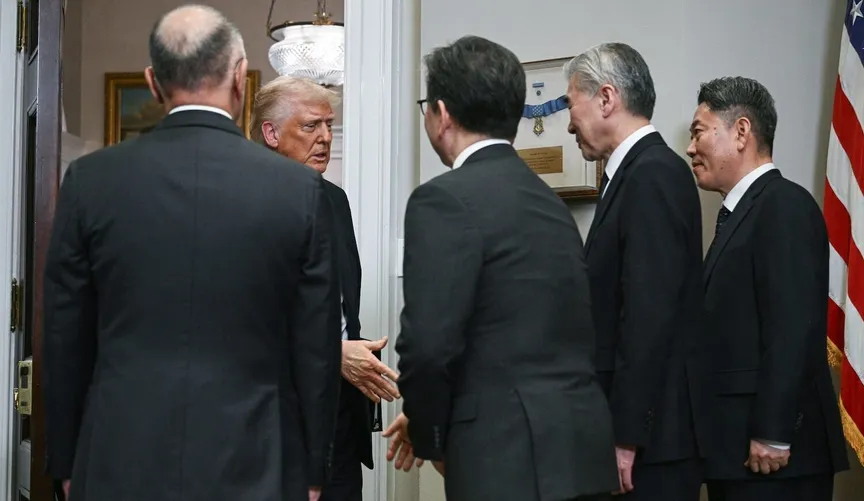
Hyundai Motor Group says its plan to invest $6 billion in a low-carbon steel plant in Louisiana “remains unchanged,” despite the Trump administration’s cuts to tax credits for the green hydrogen needed to produce clean iron and a recent immigration raid on a factory the automaker is building in Georgia.
In a statement last week to NPR’s Gulf States Newsroom, Hyundai said the company’s investment “is centered on creating thousands of high-quality American jobs.” The South Korean car manufacturer did not respond to Canary Media’s request for comment.
The Louisiana facility, set to come online in 2029, has emerged as the United States’ leading green-steel initiative.
“This is going to be the flagship project when it comes to green steel,” said Matthew Groch, senior director of decarbonization at the environmental group Mighty Earth.
Days before President Donald Trump returned to office in January, Swedish steel company SSAB quietly pulled out of talks with the Department of Energy for a $500 million grant to support a green-steel project in Mississippi. In June, Cleveland-Cliffs backed away from its plans to replace the blast furnaces at its Middletown Works facility in Ohio with cleaner, hydrogen-ready technology, also with $500 million in financing from the federal government.
Between those two decisions, however, Hyundai bucked the trend, announcing plans in March for its Louisiana steel plant.
Designed to use direct reduced iron, a cleaner method of making iron that relies on natural gas or hydrogen instead of the coal that fuels a blast furnace, the Hyundai facility is slated to produce 2.7 million metric tons of steel each year, including“low-carbon steel sheets using the abundant supply of steel scrap in the U.S.”
Hyundai’s initial press release did not explicitly mention direct reduced iron or hydrogen. But a Korean newspaper article noted at the time that the project would include direct reduced iron, and the 3.6 million tons of iron ore the Louisiana government said the plant would import each year will require some kind of processing. Since then, the company has clarified its plans at state regulatory hearings, Groch said.
At a Louisiana Clean Hydrogen Task Force meeting in June, Hyundai laid out its vision for bringing the plant online in about four years using what’s called blue hydrogen, a version of the fuel made with natural gas and equipped with carbon-capture technology to prevent the emissions from entering the atmosphere. But by 2034, Groch said, Hyundai intends to start producing green hydrogen — made with renewable energy — at the facility to power the process.
A clean industrial plant would likely be welcomed in Ascension Parish, roughly an hour west of New Orleans in the heart of the Bayou State’s so-called Cancer Alley. A new survey, shared with Canary Media, shows 60% of residents in the area favor investment in green hydrogen for steelmaking. The poll, commissioned by the Sierra Club’s Delta Chapter and conducted by JMC Analytics, “makes clear that steel manufacturing at this scale presents a unique set of opportunities for Louisianans,” said Angelle Bradford Rosenberg, the chair of the Sierra Club affiliate’s board.
“Residents are aware that the technology exists to make steel that is clean and has low impact on communities — they want Hyundai to make good on their promises,” Bradford Rosenberg said in a statement. “This poll shows that communities want industry to prioritize clean energy, and provide steel using renewable energy.”
For much of the past decade, Hyundai has focused on growing its presence in the U.S. market, particularly as competition from cheap Chinese electric vehicles mounts in Asia and Europe. The steel plant is part of a broader $26 billion investment that includes the EV-battery plant in Georgia where Immigration and Customs Enforcement arrested and shackled hundreds of South Korean workers in a high-profile raid in September.
Signs are emerging of Hyundai’s broader ambitions. First, there’s the location of the plant in Ascension Parish. That industrial corridor hosts the Louisiana stretch of an ammonia pipeline system that extends from the Gulf state all the way north to Indiana. Hydrogen is notoriously tricky to ship because the world’s smallest molecule is prone to dangerous leaking. Transformed into ammonia, however, hydrogen becomes a liquid that can be easily transported via a pipeline.
“They could eventually be selling green hydrogen as far as Indiana,” Groch said of Hyundai. “That’s why they’re building it there.”
Then, there’s the potential to supply rivals.
Last September, General Motors inked a partnership with Hyundai to work together on new car models and establish a shared supply chain that circumvents China. In June, news broke that GM abandoned the Chinese steel company supplying its Korean factories in favor of a new deal with Hyundai.
In August, however, GM signed an unusual three-year deal to buy steel for its American plants from Cleveland-Cliffs. Typically, such deals are structured to last a year. But the expiration date of this one coincides with when Hyundai expects to start selling steel made in Louisiana in the U.S.
“Hyundai has played this incredibly well,” Groch said.